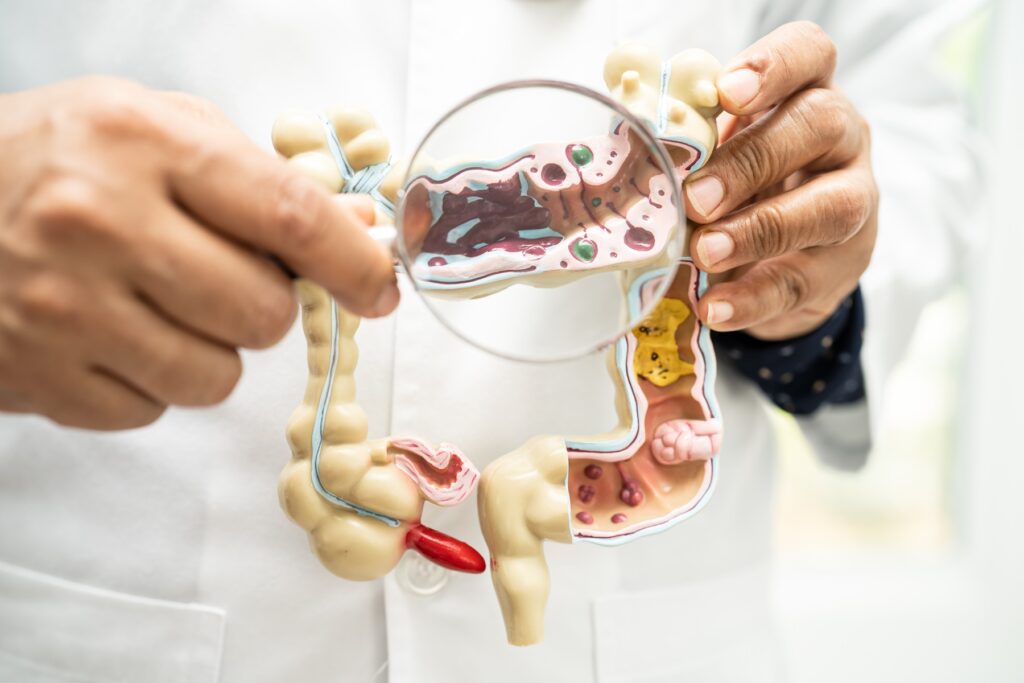it’s Emily here.
If you’ve been hanging out with me on this blog for a while, you know I have a soft spot for all things microbiome. Today, I want to introduce (or reintroduce!) you to one of the most fascinating members of our gut community: Bifidobacterium longum.
I know, it sounds like something out of a science textbook, but trust me — this little microbe could have a huge impact on your health, especially if you’re a woman dealing with gut issues, immune challenges, or even recurring vaginal discomfort.
The Science in Simple Words
So, let’s break this down. Bifidobacterium longum is a probiotic species that naturally lives in our intestines. In fact, according to research, it’s one of the very first bacteria to colonize a newborn’s gut right after birth. That means this strain has been “on our team” since day one.
One of the coolest things I learned while diving into the studies is that B. longum is highly adaptable. It can survive the tough journey through the digestive system, resist stomach acid, and thrive in our intestines — which is exactly where we need it to be.
And here’s a fun fact straight from Wikipedia: scientists have found that B. longum produces enzymes that help us digest otherwise indigestible carbs (like certain fibers). Basically, it helps us turn food into energy and nutrients that our body wouldn’t absorb on its own. That’s why many people who take probiotics with B. longum report less bloating and more “regularity.”

Why Women Should Care
Ladies, let’s be real: our bodies are amazing, but also a little complicated. The gut and vaginal microbiomes are like distant cousins — what happens in one can affect the other. When your gut is out of balance, you may also be more prone to yeast infections, UTIs, or just feeling “off” down there.
Here’s where B. longum comes in:
- Immune support: This strain plays a role in training our immune system not to overreact (goodbye, constant inflammation).
- Balance: It helps keep bad bacteria and yeast from growing out of control, which means a healthier vaginal environment too.
- Mood connection: Yep, the gut-brain axis is real. Some studies suggest that B. longum can positively affect stress and mood. Think of it as a natural mood stabilizer built right into your belly.
One clinical study even showed improvements in anxiety-like symptoms when participants supplemented with B. longum. Imagine that — a tiny microbe making a noticeable difference in how you feel mentally and emotionally.
Alone vs. With Friends
The review I mentioned earlier pointed out that B. longum works well both on its own and in combination with other probiotic strains. On its own, it supports digestion, strengthens the gut lining, and boosts immunity. But when paired with other probiotics like Lactobacillus acidophilus or Lactobacillus rhamnosus, its benefits go next-level.
I like to think of it like this: if B. longum is the star player, the other strains are the supporting cast that help it shine brighter. Together, they create a kind of “microbiome orchestra” that plays in harmony to keep your body balanced.
What the Numbers Say
According to the National Institutes of Health, gastrointestinal disorders affect up to 70 million people in the U.S. each year. And guess what? Women are more likely than men to deal with things like IBS, bloating, and recurring yeast infections.
Now think about this: probiotics are already a multi-billion-dollar industry in North America, with women representing one of the fastest-growing consumer segments. Combine those stats with the fact that strains like B. longum are being researched for everything from digestion to mental health, and you’ve got a recipe for massive impact.
To me, this shows two things:
- Women are actively looking for natural solutions.
- Science is finally giving us the evidence to back up what many of us already feel — probiotics can make a real difference.
A Few More Fun Facts
- B. longum is divided into several subspecies, like B. longum subsp. infantis, which is especially good at digesting human breast milk. That’s why it’s so important in early life.
- Some strains of B. longum can actually break down environmental toxins and even reduce cholesterol. How crazy is that?
- Unlike many bacteria, B. longum can stick around in the gut long-term. That means consistent benefits over time.
My Personal Take
Here’s where I get personal. I started taking probiotics with Bifidobacterium longum a few months and I noticed subtle but powerful changes: less bloating, better digestion, and — this might sound cliché — just feeling “lighter.”
Of course, probiotics aren’t magic pills. You still need to eat well, manage stress, and take care of yourself. But I see B. longum as one of those gentle helpers that works quietly in the background, giving you just enough support so your body can do what it does best: heal and thrive.
Bottom Line
If you’ve been struggling with digestive discomfort, recurring yeast infections, or even mood swings tied to gut health, it might be worth giving probiotics with Bifidobacterium longum a try.
It’s not just hype — it’s backed by decades of research, ancient evolutionary biology, and, honestly, a growing number of women (including me!) who swear by its benefits.
So, next time you’re scanning a probiotic label and you spot B. longum, smile — because you’ve just met one of the microbiome’s true superheroes.
What do you think? Would you try a probiotic with B. longum? Have you already? Share your story in the comments — I’d love to compare notes!



